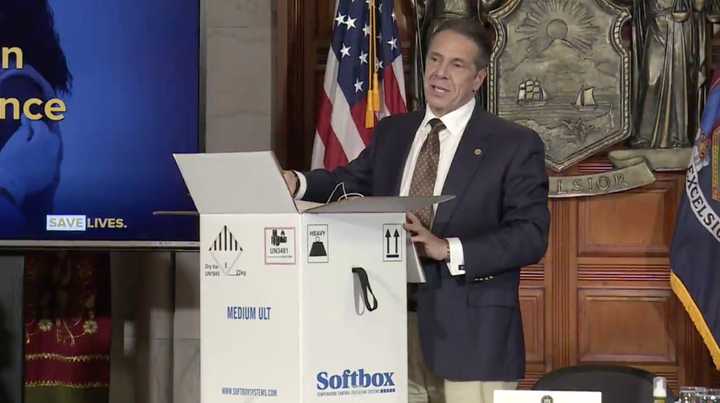In a new New York Times report, it was revealed that Cuomo’s criticism and dismissiveness of some health officials led to nearly a dozen of the governor’s aides to head for greener pastures.
The governor's strict approach to the distribution of the vaccine also reportedly played a role in the "bottleneck" the state found itself in during the slow rollout of the vaccination plan.
The report comes days after Cuomo mocked “experts” during a COVID-19 briefing in Albany on Friday, Jan. 29 while the state struggles to keep up with the demand for the vaccine as it awaits new allocations from the federal government.
“When I say ‘experts’ in air quotes, it sounds like I’m saying I don’t really trust the experts,” he said, referencing the changing policies and theories that have guided New York’s handling of the pandemic. “Because I don’t ... Because I don’t.”
In attempting to take over control of New York's distribution plan, Cuomo also reportedly caused further problems that drove a wedge between him and the state's top health officials.
The mass exodus of staff members in Cuomo’s administration came as many only found out about Cuomo’s major announcements as he made them during his COVID-19 briefings, after which he would ask local governments to match the guidance he and the state provided.
When the first wave of the COVID-19 pandemic first hit New York in spring last year, the report states that Cuomo "all but declared war on his own public health bureaucracy."
At least nine senior state health officials have left the department, resigned or retired in recent months, including Elizabeth Dufort, the medical director in the division of epidemiology; Dr. Jill Taylor, the head of the renowned Wadsworth laboratory — which has been central to the state’s efforts to detect virus variants — and the executive in charge of health data, according to state records.
According to the report, Cuomo opted out of using the state Department of Health’s vaccination plan, instead, taking a different approach that was reliant on larger public and private hospital systems.
Cuomo drew criticism for relying on hospitals - many of which are private - and not local governments to vaccinate those eligible in group "1A," which included healthcare workers, nursing home residents, and employees, which helped cause the bottleneck.
"Extensive red tape and unnecessary rigidity over who we could vaccinate and when — all with the looming threat of millions of dollars in punitive fines — made an extraordinarily difficult task all the more challenging in those first initial weeks of the rollout,” Avery Cohen, a spokeswoman for Mayor Bill de Blasio stated.
Following the slow rollout, Cuomo said that he had enlisted hospitals to begin the vaccinations, "because that's where nurses and doctors work. That's the frontline." That decision went against some previously installed plans put in place for lower levels of government.
"That was the bottleneck," Dr. Denis Nash, an epidemiology professor at the City University of New York said in the report. "To put hospitals in charge of a public health initiative - for which they have no public health mandate, or the skills, experience, or perspective to manage one - was a huge mistake, and I have no doubt that's what introduced the delays."
Cuomo's top aide, Melissa DeRosa cited the state's vaccination distribution network and a lack of supply in defending her boss.
"We put together an operation where we used all the levers at our disposal to as quickly as possible vaccinate as many people as possible," she said. "and it obviously worked since we’re now oversubscribed and out of vaccine.”
The complete New York Times report can be read here.
Click here to follow Daily Voice Poughkeepsie and receive free news updates.
